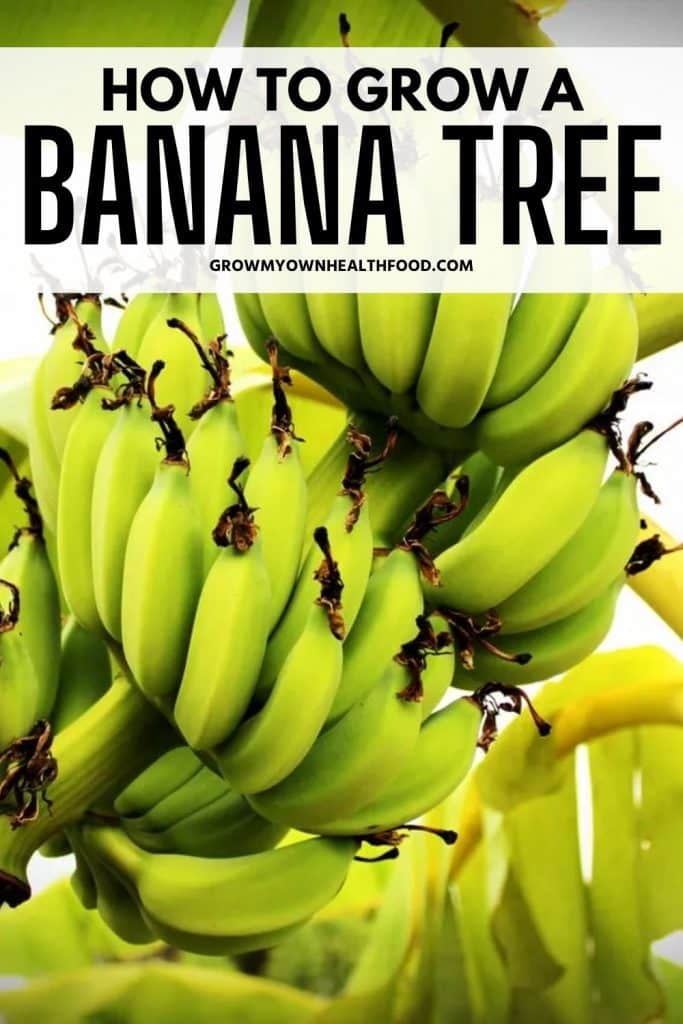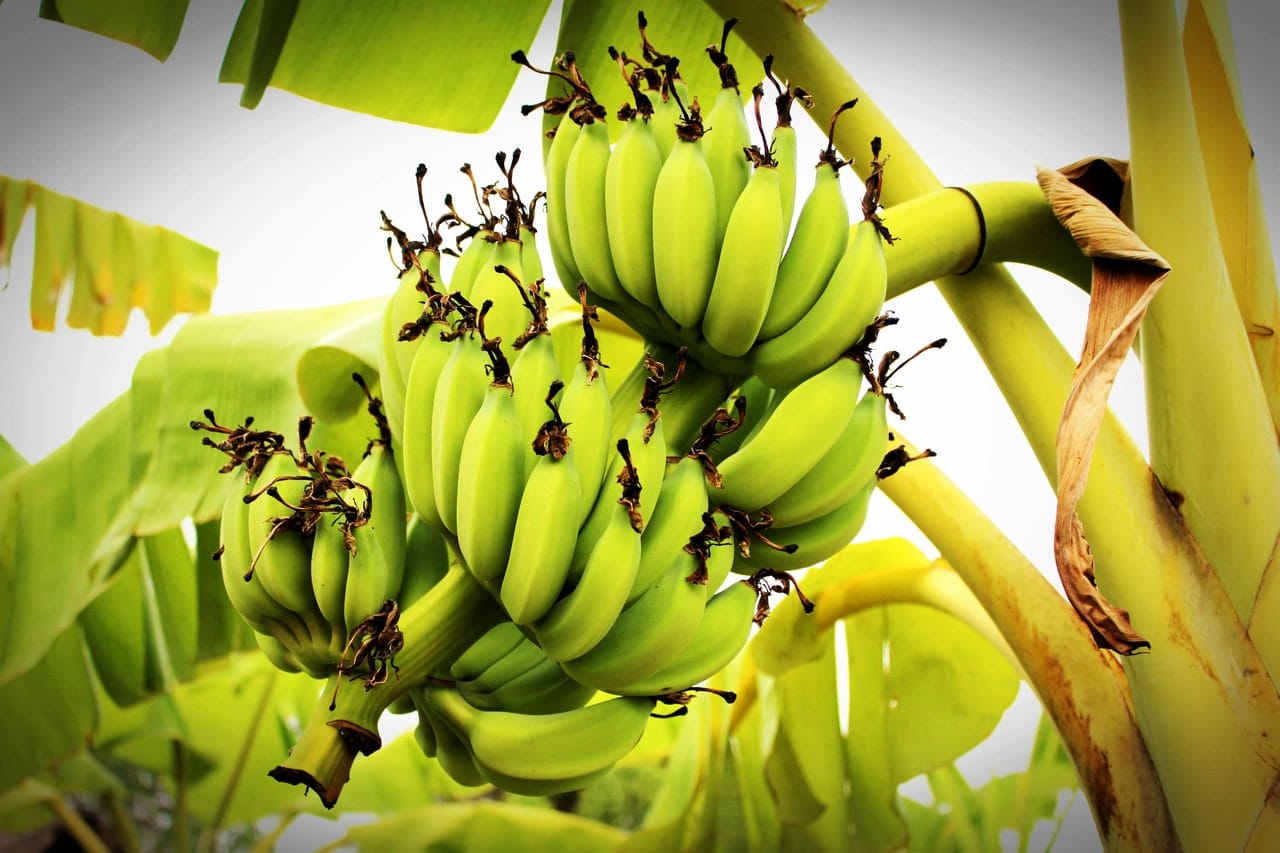Growing bananas is not very difficult, but it does require some work. Having a banana tree in your garden can actually help you in multiple ways. For example, the vast size of the banana leaves can provide you with shade from the scorching heat. The banana leaves are also great for feeding cattle. Most importantly, they give you lots and lots of bananas that you can eat any time of the day! This article will provide you with all the facts you need to know before you go on to grow a banana tree.
Complicated History of Banana Tree Growing
Growing banana trees is not that difficult as long as you know how to procure their suckers or seeds. Unlike most other fruits, getting banana seeds is not as simple as buying a fruit. Bananas are commercially grown specifically so they are fit to consume. Over the years, these bananas have modified into having three sets of genes instead of two, which means that they do not produce any seeds. We generally eat the Cavendish variety of the banana which has been genetically altered. On the other hand, wild bananas do produce seeds but they can be so large that it may be altogether difficult to eat the banana. Therefore, for the purpose of growing bananas, you will need to get your own seeds from a supplier. Another thing you should know about growing bananas is that if you want to grow banana plants from seed, the fruit will most likely be different from the one you buy from the grocery stores. This banana will contain seeds and may also be larger in size.

Growing a Banana Tree
Best Way to Grow a Banana Tree
The best way to grow banana trees is from suckers that the mother banana tree produces at its base. Cut these suckers off from a healthy banana tree. While doing so, you must cut through the corm (between the sucker and the mature tree). This step is not easy and will take some precision. Your banana tree sucker must have a big chunk of corm and a lot of roots so there are more chances of it propagating into a tree. As you plant the sucker in the soil, chop its top off so there is no evaporation while it settles into its new home.
Growing Banana Tree From Seeds
Another way to grow bananas is through seed. However, people do not prefer this method as it demands much more patience. If you have wild seeds, soak them in water as that is the only way they will germinate. Once the seeds are ready, sow them in permeable soil so that there is no rot. For the seedlings to sprout, you must keep the soil warm with a heating mat or heat lamp. Fluctuation in the soil temperature could help in seed germination. Keep the soil moist and cover it with a plastic bag to create a humid environment. The most important thing you will need to have is patience as banana seeds can take a few weeks to six months to germinate.
- Value Package: Includes 3 starter trays with 3 matching humidity domes, each capable of holding 48 Cells (8 Trays, 6-Cells Per Tray) filled with soils.
- Ideal Size: Medium size trays are easy to carry and fit well on a windowsill - Sturdier, easier to carry and more manageable than larger 1020 trays. Dome is designed extra high for taller seedlings. Inner space: 13.7” x 10” x 6”.
- Studry and Heavy Duty: High quality plastic is durable, reusable and recyclable - perfect for starting seeds, clones, growing micro greens, herb and salad leav
Prices pulled from the Amazon Product Advertising API on:
Product prices and availability are accurate as of the date/time indicated and are subject to change. Any price and availability information displayed on [relevant Amazon Site(s), as applicable] at the time of purchase will apply to the purchase of this product.
How to Maintain Your Banana Plant?
Here are some components that you need to take care of as you plant bananas!
- The first step is to ensure that bananas can actually grow in your region. Bananas require a moderate temperature that is neither too hot, nor too cold. Any harsh temperatures will impact your banana plant’s growth. If you want to successfully grow a banana tree, you must provide a temperature between 78 to 86° F.
- Light is also important for banana trees and most bananas prefer to grow in full sun. This means that your banana tree will need at least 6 hours of daily sunlight. It is only a few varieties that will need to grow in partial shade as they can scorch easily. It is better to be fully aware of what your banana tree variety needs so you can provide it with proper light.
- After the temperature is taken care of, we move on to the next important element which is water. Banana plants can only tolerate extreme heat if they have enough water. They also need high humidity and lots of water. Many people water their banana plants with sprinklers two to three times a day.
- The other important component for banana trees is the soil. Banana plants require rich soil. A key to preparing a soil-like that is by adding lots of compost, chicken manure, and wood ash (for potassium) before you plant the bananas. Afterward, keep adding mulch to the soil.
- Help improve root efficiency and encourage nutrient uptake.
- Designed for container planting.
- Highly recommended for container gardens. Ready to use right out of the bag and is pH adjusted to allow for maximum nutrient upta
Prices pulled from the Amazon Product Advertising API on:
Product prices and availability are accurate as of the date/time indicated and are subject to change. Any price and availability information displayed on [relevant Amazon Site(s), as applicable] at the time of purchase will apply to the purchase of this product.
Banana Tree Planting Space
- Another important factor for growing banana trees is providing them with enough space. If you have ever seen a banana tree, you will have an idea of how large your own banana tree can grow. Moreover, usually, banana trees are grown in clumps, where the trees on the outer layer do not seem to be in their best shape. It is the trees in the middle that produce the best bananas. Instead of growing a single banana tree, you should plant multiple trees with each other. Doing so provides the trees with humidity so that the trunk remains cool.
- Every now and then, remove any dead leaves. If there are any unwanted suckers, cut them off so that you can get a bigger fruit. It is best to keep one sucker per plant or your patch will become too crowded. While removing the suckers, you must keep in mind that the best suckers are the ones that have small, spear-shaped leaves. The suckers that appear pretty and have big round leaves must go!
- Fast acting, long lasting, robust nutrition feeds trees, evergreens and shrubs
- 5 Inch TruSpikes are packed with fertilizer. Theyre easy to hammer in (no cap required) and will not break, crush or shatter
- Simple to use. For best results, feed once per season -- early spring, and late fall -- for continuous fertilization
Prices pulled from the Amazon Product Advertising API on:
Product prices and availability are accurate as of the date/time indicated and are subject to change. Any price and availability information displayed on [relevant Amazon Site(s), as applicable] at the time of purchase will apply to the purchase of this product.
What Happens to a Banana Tree After It Is Grown?

For a banana plant, it takes about eight to nine months to fully grow up and produce bananas. Similar to berries, bananas grow from the center of the plant’s flowers. After the banana tree is fully grown, the mother plant dies but leaves many suckers (tiny baby plants) at its base. As we have already mentioned, these baby plants are important because they can be taken off and then transplanted at some other spot. These suckers can also be used to replace the mother plant.
Put in the Work and Have Patience!
Starvation and lack of water are the major causes of the death of a banana tree. As long as you protect and feed your banana plant, they should grow up into healthy trees. If you are serious about growing banana trees, we also recommend that you take a look at a banana plantation. There, you will get an idea about the kind of environment a banana tree needs to fully thrive. You must provide your banana trees with a jungle-like environment for the best results.










